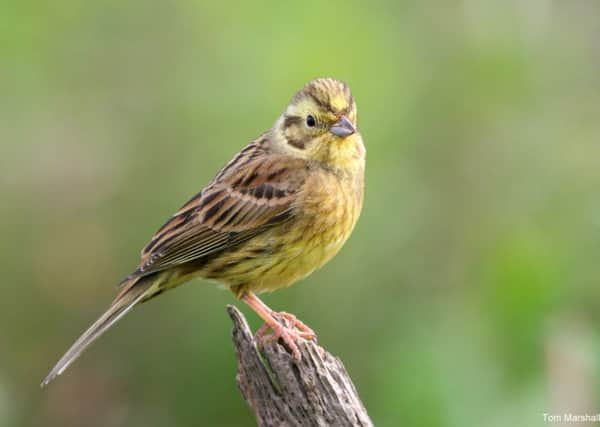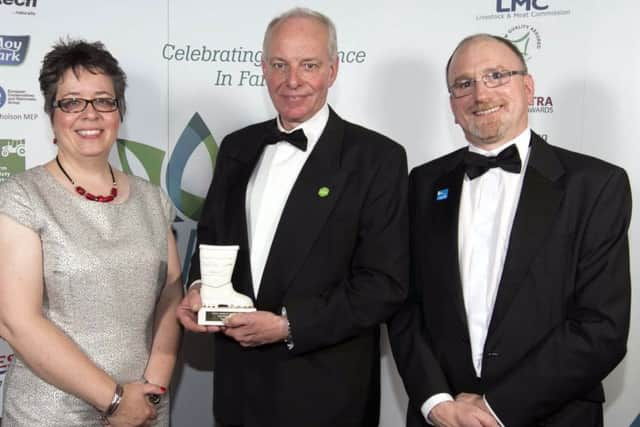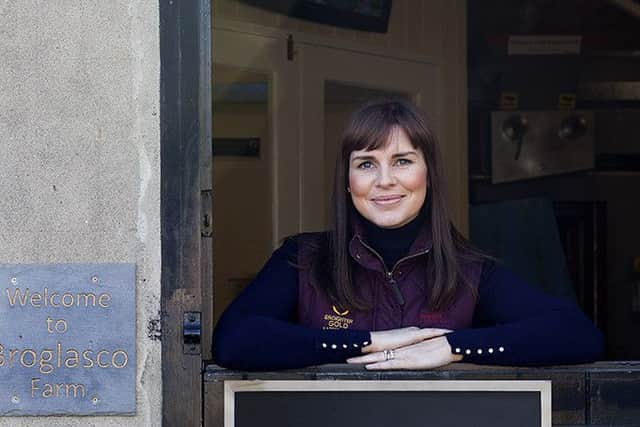Local farmers answer SOS call


Winter is a harsh time for wildlife. As the days shorten and temperatures drop, birds and other animals can find it hard to find a reliable source of food in the countryside.
In particular, seed-eating species like yellowhammers, tree sparrows, linnets and reed buntings are finding it increasingly difficult to find sufficient quantities of seed which they need to survive.
Advertisement
Hide AdAdvertisement
Hide AdAs a result, there have been widespread declines in many of our most iconic farmland birds. For example, the brightly coloured yellowhammer is now a red-listed species of conservation concern. This is extremely worrying, considering the species was common throughout much of our countryside as little as 40 years ago.


However, there are many things farmers can do to help the birds that depend on farmed land for their survival. In partnership with RSPB NI, 20 farmers in east Co Down and around Lough Foyle have been creating areas for pollinators and creating safe nesting spaces through wildlife-friendly hedgerow management. Many have also sown wild bird cover – seed-rich crops that are left to stand throughout the winter and provide a valuable lifeline for farmland birds.
Another measure which SoS farmers are trying this year is the creation of farmland bird feeding stations. To create a farmland bird feeding station, spread a 25kg bag of cereal grain along a free draining firm area of ground on the farm, preferably close to a thick hedge. This can be undertaken from December through to the start of April. A farm track or laneway is a perfect place to site one. Wheat, oats and barley can all be used.
Newtownards farmer Roy Lyttle, the 2016 NI Wildlife-Friendly Farmer of the Year Award winner, is creating a farmland bird feeding station on his land alongside a field of wild bird cover he established in spring.
Advertisement
Hide AdAdvertisement
Hide AdHe commented: “It gives me great pleasure to see species like yellowhammer and linnet using my land. I’m already seeing flocks of over 200 birds using the wild bird cover I’ve established and, along with the farmland bird feeding station, I hope to attract even more as the winter continues.


“By continuing to sow wild bird cover or creating bird feeding stations, these farmers are providing a vital lifeline to species that will struggle otherwise.
“This demonstrates the vital role that farmers play in helping some of our best loved wildlife and that undertaking small actions can make a big difference.
“The fact that many of these farmers are doing this without financial reward through agri-environment highlights how much they want to continue to see a countryside that is rich in wildlife and the role that they can play in achieving this.”
Advertisement
Hide AdAdvertisement
Hide AdLeona Kane from Broglasco farm in Limavady added: “We’re always delighted to work with the RSPB to help protect our local wildlife and we are looking forward to seeing the effect of the supplementary feeding project.
“The more that farmers like us do for the environment, the better for everyone.”